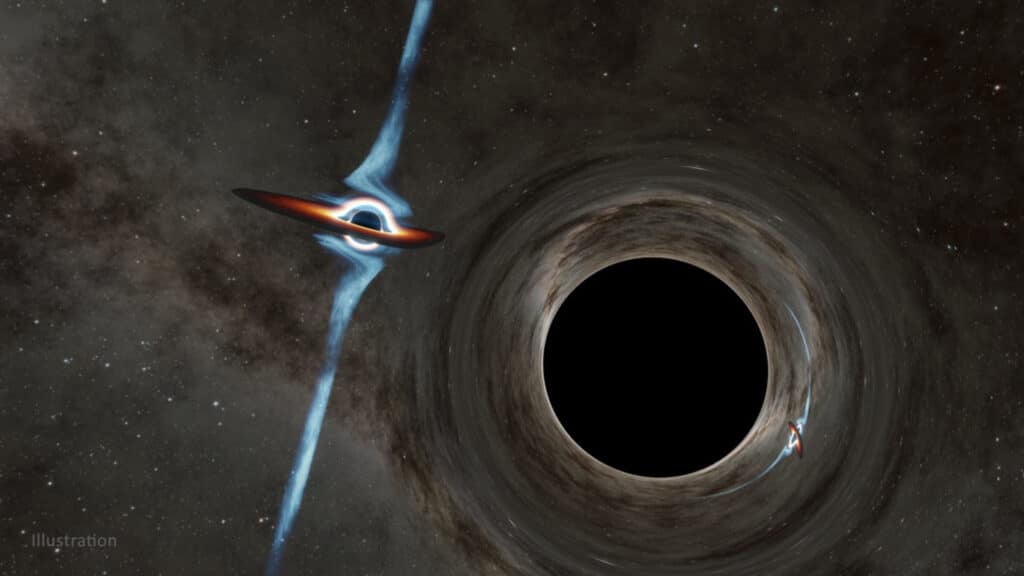Black holes have long captured the fascination of astronomers and novice space fanatics alike, but new research could change a long-held belief about them. In a significant shift from conventional cosmic theories, a team of international researchers propose that black holes may not always exist as solitary phenomena in space but could potentially coexist in pairs within a constantly expanding universe.
Black holes are astronomical objects with extremely strong gravitational forces, so intense that not even light can escape their grasp. They are known for their high density, compressing massive amounts of matter into very small spaces.
According to the longstanding view based on Einstein’s theory of General Relativity, black holes are typically isolated, either static or spinning, due to their gravitational pull. If other black holes come into proximity, they would eventually collide, making the concept of a stable pair of black holes seem highly unlikely.
Yet, scientists from the University of Southampton, the University of Cambridge, and the University of Barcelona present a different perspective, considering a universe in perpetual motion. “The standard model of cosmology assumes that the Big Bang brought the Universe into existence and that, approximately 9.8 billion years ago, it became dominated by a mysterious force, coined ‘dark energy,’ which accelerates the Universe at a constant rate,” explains Professor Oscar Dias from the University of Southampton, in a statement.
This force, known to scientists as the “cosmological constant,” is central to the new theory. In a universe under the influence of this constant, black holes exist in a setting that is always expanding. This fundamental detail alters the dynamics of how black holes might interact.
More Than Just 2 Black Holes?
The research team, through detailed numerical analysis, discovered that in such a universe, two non-spinning black holes could theoretically maintain a stable existence side by side. The key is a balance between their mutual gravitational attraction and the outward push of the cosmological constant. These forces counteract each other, allowing the black holes to remain a constant distance apart.
Professor Dias points out an intriguing consequence: “Viewed from a distance, a pair of black holes in this balanced state would look like a single black hole. It might be hard to detect whether it is a single black hole or a pair of them.”
Furthermore, the team believes their findings have broader applications. “Our theory is proven for a pair of static black holes, but we believe it could be applied to spinning ones too. Also, it seems plausible that our solution could hold true for three or even four black holes,” says Professor Jorge Santos from the University of Cambridge.
This new perspective on how black holes can exist challenges traditional astronomical beliefs and prompts further exploration into the mysterious expanses of our universe. The researchers’ findings are published in the journal Physical Review Letters.













This explains the Space Shuttle explosion.
Can you explain further? I’m very interested in your thoughts.
Can you explain further? I’m very interested in your thoughts.